
8 Yoga Poses and Asanas
8 Yoga Poses and Asanas: Beginner to Advanced
“Health is wealth” is something we hear all the time.
Everyone is busy with their daily lives, and only after we have the time to truly focus on their health.
How many times have you purchased a gym subscription and given up? At least once?
Well, it happens to everyone. The reasons may vary. May be the gym is too far from your home, you’re too lazy to go, or the trainer isn’t the right fit. The roots of our lives often trace back to ancient practices, and one such practice is yoga, which can be done in the comfort of your home. Yoga poses and asanas benefit the human body in countless ways—ways you might not even imagine.
In this article, we will discuss the best yoga exercises one by one, which will not only improve your body but also enhance your mind, providing overall mental wellness and a healthy physique.
Without further ado, let’s dive into yoga exercises, starting from beginner to advanced levels. There are many yoga asanas, and hearing about all of the might feel overwhelming. But let me simplify it for you. Yoga stretches and Asanas can be categorized into different types: standing, balancing, resting, backbends, and seated poses.
If you’ve ever woken up and stretched your arms over your head, you’ve already attended a yoga retreat
Crazy,right?
Yes, it’s that simple.
Let’s start with simple yoga positions.
Here Are 8 Beginner Yoga Asanas That Will Make You Fit
1. Mountain Pose (Tadasana):
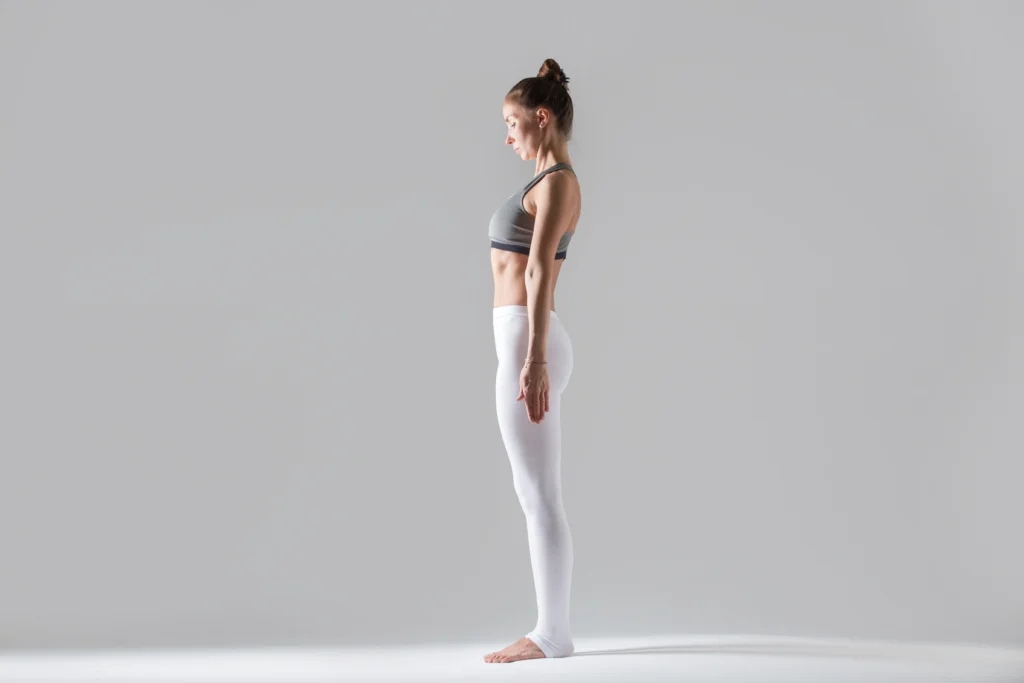
This basic pose is typically performed at yoga retreat centers, where yoga experts help you on how to improve your posture and increase your body’s awareness.
This is a simple standing yoga for beginners.
“Simply stand, and it becomes a yoga posture?”
Yes, it’s that simple—but with a slight variation.
Here’s how:
● Stand tall with your shoulders and pelvis stacked.
● Look straight ahead, ensuring your head and feet are aligned if you were to draw a line from head to toe.
● Press your feet firmly into the ground and keep your spine elongated.
Let’s move to the next one
2. Downward Facing Dog (Adho Mukha Svanasana):
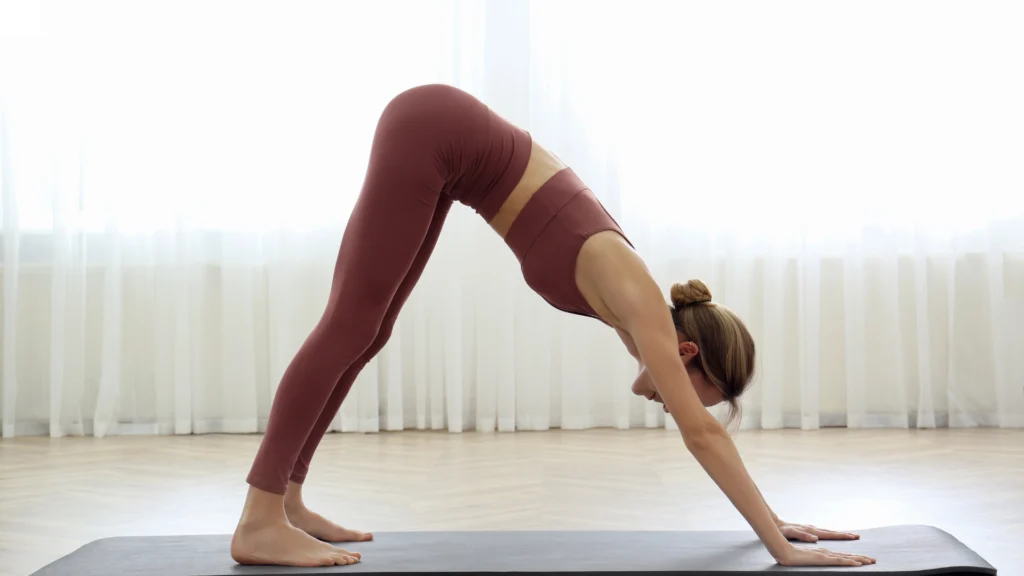
The pose is typically used during yoga retreat sessions to help individuals increase their flexibility and circulation.
In this pose:
● Lean your body toward the floor (but avoid leaning too much, as it might turn into a plank).
● Keep your weight on your legs and place your hands on the floor with a slight stretch.
● Raise your hips and keep your feet parallel.
3. Downward Facing Dog (Adho Mukha Svanasana):

The pose is frequently used in Yoga & Healing Center classes to help build inner strength and stability. In this pose:
● Lean your body toward the floor (but avoid leaning too much, as it might turn into a plank).
● Keep your weight on your legs and place your hands on the floor with a slight stretch.
● Raise your hips and keep your feet parallel.
4. Warrior 2 (Virabhadrasana 2):

● Bend your front knee at a 90-degree angle, aligning it over the ankle and keeping the foot parallel to the mat.
● Stretch your back leg and press the outer edge of the foot firmly into the mat.
● Stretch your arms parallel to the ground with palms facing down.
● Turn your face toward the front hand.
This pose strengthens the legs, core, and shoulders while improving balance, stability, and focus.
5. Raised Hands Pose (Urdhva Hastasana):

● Stand tall with your feet together and firmly grounded.
● Gently pull your belly in without straining your back.
● Raise your arms toward the sky, bringing them close together while keeping your shoulders relaxed.
● Face your palms toward each other or bring them into a prayer position.
● Hold the pose for a few breaths, embracing the stretch and openness.
● As you exhale, gently lower your arms and return to Mountain Pose.
6. Plank Pose(Phalakasana):
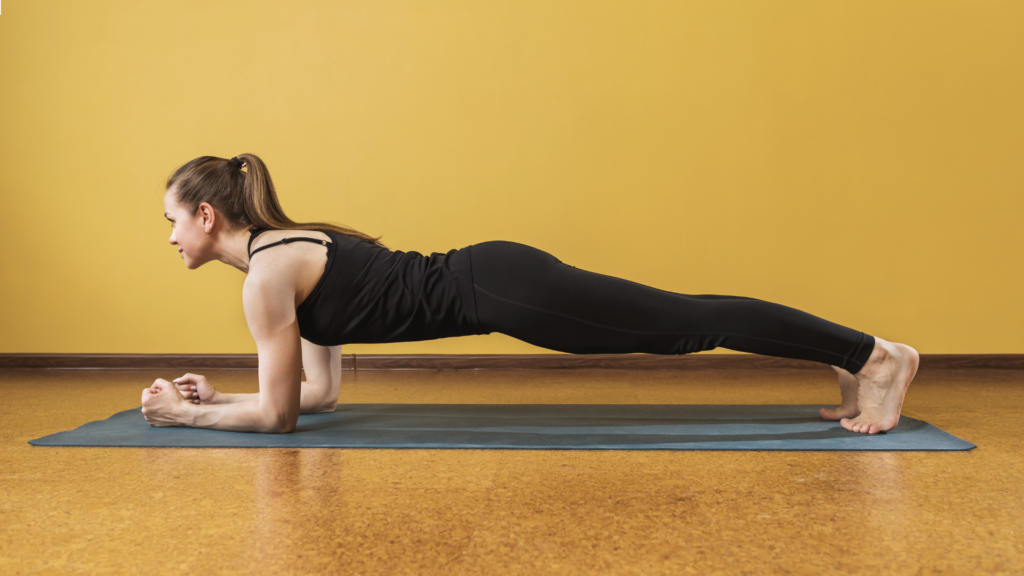
The plank pose is often used as a transition pose and is an essential part of many yoga sequences. It’s not too difficult to do correctly.
- Start on all fours, positioning your wrists directly below your shoulders and your knees beneath your hips.
- Extend both legs straight back, tuck your toes under, and engage your core to maintain stability.
- Align your body in a straight line from head to heels, keeping your hips level and pressing firmly through your hands.
- Hold the pose for a few breaths, then lower down or transition into the next movement.
There are many such beginner yoga exercises that can be easily mastered with just a little practice.
Now, let’s look at 2 advanced poses that are both challenging and interesting.
Plank Pose is an essential component of numerous yoga sessions because it helps build endurance and fundamental strength.
7. Astavakrasana (Eight- Angle Pose):
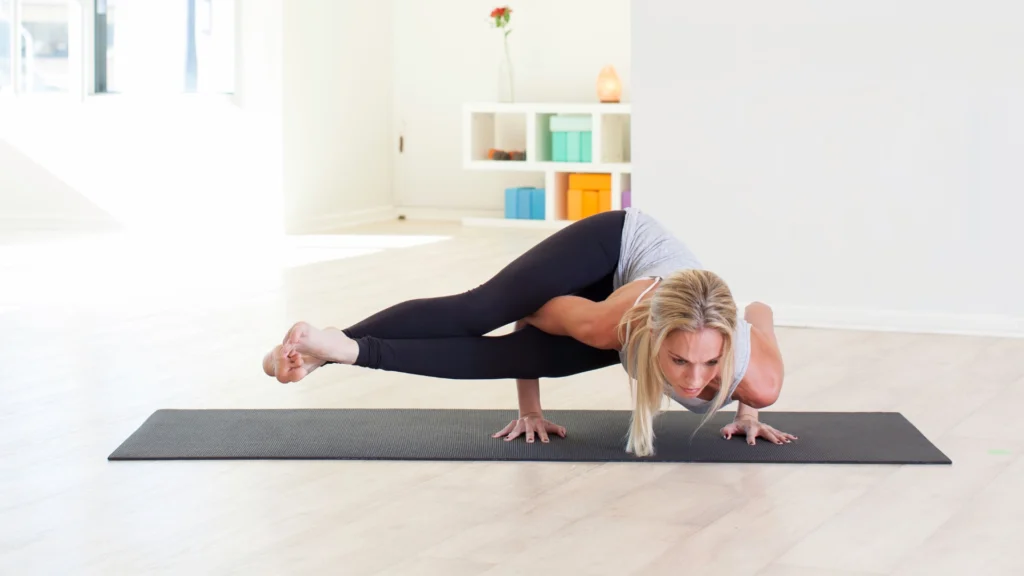
This pose may look tricky, but let’s break it down into easy steps:
● Begin by sitting with your legs stretched straight in front of you.
● Bend your right knee and place your right foot over your left upper arm, positioning it as close to your shoulder as possible.
● Firmly press your hands into the mat beside your hips, spreading your fingers wide for stability.
● Engage your core and lift your hips and legs off the ground by pressing through your hands.
● Extend your legs to the side and cross your ankles.
● Hold the pose for a few breaths, keeping your chest open and your gaze slightly forward.
● Gently lower back down and repeat on the opposite side.
8. Chin stand:
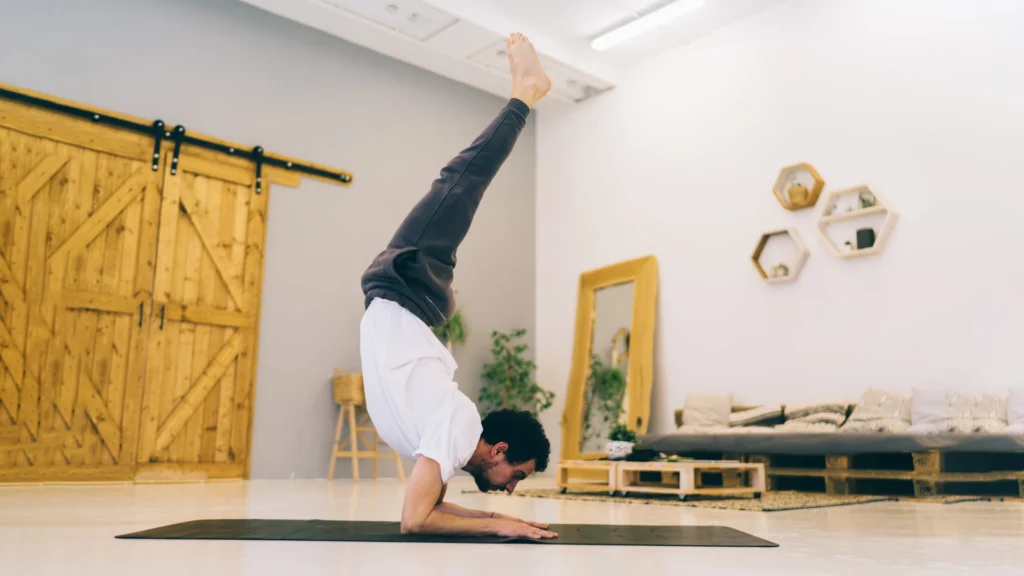
● Start in Downward-Facing Dog, pressing firmly through your hands and grounding your feet.
● Shift your weight forward, lowering your body with your elbows close to your ribs.
● Gently lower your chin to the mat, keeping your chest open and shoulders engaged.
● Engage your core muscles and begin lifting one leg, then the other, extending them upward.
● Balance on your chin and hands, keeping your elbows bent and using your arm strength for stability.
● Focus on engaging your core and maintaining steady breaths as you hold the pose.
● Keep your body light and lifted, avoiding tension in the neck or shoulders.
● Hold the position for a few breaths, maintaining control and balance throughout.
● To exit, slowly lower your legs back to the mat with control.
● Transition into Child’s Pose or return to Downward-Facing Dog to recover and relax.
Conclusion:
These are just a few asanas. There are many more fascinating yoga stretches to explore.
Yoga is a transformative journey that progresses from foundational poses to advanced asanas, building strength, flexibility, and mindfulness along the way.
Beginners can focus on alignment, stability and yoga for flexibility, while more experienced practitioners can challenge themselves with deeper stretches and balances.
Ready to deepen your yoga practice? Start exploring new asanas today!
Join a yoga class or book a retreat to experience guided sessions and take your practice to the next level!
Keep exploring, stay present, and enjoy the journey!



Leave a Reply